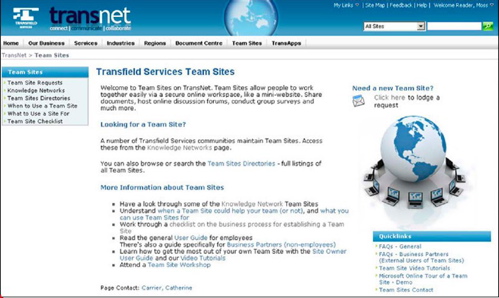People Process Technology
Dave Snowden has been having a hoity toity about stupid categorisations over at Cognitive Edge, and he’s included the “People, Process, Technology” triad (some people add Content) into the Domain of the Damned. He asks: “All three have to co-evolve; why or why do people fall into the pit of reductionism and categorisation with such ease?”
Well I can think of one good reason why it’s good to have this trio (or quad) – not so much as reductive categories (Dave may be building a straw man here) but as useful reminders to people who need to span all three. Technology people do need to be reminded (forcefully and painfully sometimes) that process and people (and content) matter. People have to be reminded that magic only exists on TV and by sleight of hand, and the affordances and constraints of technology and tools have to be grappled with to be understood at the operational level. They don’t always understand that IT people can’t read their minds.
I see this trio (or quad) as a salutory mnemonic which has emerged from too many occasions where one or two of them have been privileged over the others – meaning that they have not co-evolved, and thereby the initiative has flopped disastrously.
That’s why I especially liked one of the Intranet Innovation Award winning cases this year, from a company called Transfield Services in Australia. The KM team there looked at a proposed rollout of Sharepoint Teamsites across the (global) company and evidently thought “aha! we need some process and people support here!”
So they put together their Gold award-winning “Teamsites in a Box” solution which helps new business units or communities set up their teamsites in a governed, user-and-collaboration friendly way. The solution helps a group define their requirements, deciding which functionalities get switched on or off, it helps them to define their objectives for the site and build a change management plan, there’s an intranet site about how to get the most out of a teamsite with good examples from within the company to look at, there are checklists and guidelines to help you through the setup and launch process, there’s training, both face to face and online, there is a governance structure with supporting policies looking after roles, ownership and responsibilities, deletion and archiving. ie They put people-friendly practices and structured processes in place to help the business units assimilate and get the best out the technology in a way that supports cross-company collaboration.
Though much of the rollout and management is what you might call “supported DIY” – ie locally owned – the initial set up is centrally provisioned by the KM team, and this enables them to look for prior examples of similar sites and iron out possible overlaps, or suggest linkages to other existing sites. Changes to the purpose, use or structure of the teamsites are also notified back to the central team, so they have a managed inventory of what the network of sites contains and what’s happening within it. A really nice mix of strong governance and guidance and light, local-context-friendly management.
Now this all looks like wonderful common sense. The fact it won a Gold Intranet Innovation Award suggests this kind of sense is not that common, and from what I’ve seen of normal teamsite rollouts (and Lotus teamrooms before them) is that structured, governed, consistent, supportive rollouts are more the exception than the norm. This is conscious co-evolution of people. process and technology.

0 Comment so far
Commenting is not available in this weblog entry.Comment Guidelines: Basic XHTML is allowed (<strong>, <em>, <a>) Line breaks and paragraphs are automatically generated. URLs are automatically converted into links.
